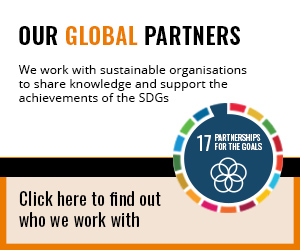Alina Marm, Head of Circular Economy Hub, Siegwerk
By championing innovations for sustainable packaging, Siegwerk has emerged as an unlikely enabler of circular economy solutions across the packaging value chain. Its approach facilitates circularity by implementing two concepts: designing for less, and designing for recycling.
While packaging has improved standards of living by creating access to safe food and water, reducing food waste and ensuring hygiene in the pharmaceutical and healthcare sectors, it is also a contributor to various ecological crises. According to research published by the PEW Charitable Trust and SYSTEMIQ, only 59 per cent of plastic waste is formally collected, and less than 15 per cent is actually recycled. The world’s plastic waste is expected to double and ocean leakage is expected to triple by 2040.
A system-wide transition to an alternative approach, where packaging waste is eliminated, is urgently needed.
“I think design is at the heart of it,” says Alina Marm, Head of Siegwerk’s Circular Economy Hub. “And when I say design, I’m not only talking about the appearance of the packaging, but also about design within the system, and within the lifespan of that packaging,”
For Siegwerk, this notion of design is predicated on lateral thinking. Rethinking the utility aspect of packaging is the starting point, and requires a re-examination of how packaging design fits its required utility. “Suppose I move into a new apartment, and make a trip to the furniture store,” Marm says. “Once there, I tell the salesperson I need a chair. He leads me to a selection of beautiful chairs. He talks to me about the different woods and leathers, and of course we discuss price. I select a chair and buy it. But not once did the salesperson ask what I wanted to use the chair for. Perhaps I needed something to throw my coat over. Or perhaps I needed somewhere to rest my foot as I tie my shoelaces. Only once the question of utility is raised does it become clear that perhaps a chair is not the best solution at all.”
In the same way, the purpose of packaging will inform its necessary functionalities. This shift can, in turn, enable circular innovations and solutions that still meet the functional needs, by using the three circular packaging levers: reduce, reuse and recycle.
Adaptability to different contexts is critical, because any solution implemented must meet local needs. Relevant questions could include whether a circular infrastructure is available at the point of sale, if the local market is familiar with the recycling of different materials, or if there is a recent history or tradition of reuse models that would be easy to tap into.
Finding effective solutions requires an assessment of the technical feasibility of circular options based on local strengths and weaknesses. Combining these considerations results in a design that best serves the needed utility while offering the most feasible circularity.
Assessing scale is also crucial. Unfortunately, this is often not considered, despite its importance. Where a material or the investment in developing a material might not make sense for a single product, it may be a scalable solution for a product group or even a brand.
To Siegwerk, circularity in a value chain means it’s not a chain at all, but a network requiring new approaches to collaboration. And collaboration becomes particularly important as technical, systemic solutions necessitate the input of various experts within this network.
“The final consideration is speed,” explains Marm. “It’s important to get feedback from the market very quickly. So put it out there. Think about rapid prototyping, for example,”
Siegwerk’s role as an enabler in the value chain is obvious considering that the technical functionality of printing inks and coatings can actively support all three levers of a circular economy: reduction, reuse and recycling.
To facilitate the reduction of plastic packaging, innovative inks, varnishes and barrier coatings offer the opportunity to close the technical performance gaps of certain materials, such as paper, improving their properties and therefore allowing their use for new applications.
For the reuse of packaging, special inks and varnish systems can meet diverse packaging requirements where, for instance, different ink properties are needed for each use cycle. For example, while the best-before date might have to change with each use, the brand name has to be more resistant than it would be for single-use packaging. Here, inks and varnishes play a crucial role to provide reusability with maximum cost-efficiency. A well-known example of this is the German multi-cycle system for certain beverage containers. The bottles are equipped with easily detachable labels that do not discolour during the washing process, while the crates can be equipped with a protective coating to improve the resistance not only of the crate itself but also of its printing.
To allow for recycling, the right selection of inks, lacquers, varnishes and barrier coatings ensures that necessary packaging functionalities are maintained when switching from multi- to mono-plastics. Coatings for example provide barrier properties to allow for a reduction in multiple film layers, layers which may otherwise impede successful recycling, even when composed of the same plastic polymer.
Successful recycling requires ink solutions that do not hinder the recycling process. In this regard designing using certain components such as PVC is crucial.
Innovative ink and coating solutions close technical performance gaps and open up entirely new application possibilities of certain materials such as paper and mono-plastics. They are also able to significantly increase the recyclability of a packaging. Inks and coatings are a crucial part of enabling a circular packaging industry and will be an indispensable part of any future circular packaging solution.
Siegwerk has a strong partner network and integrated know-how along the packaging value chain. Sharing knowledge with other industry players is key for Siegwerk to provide special inks and coatings that enable the development of new circular packaging solutions. It is only through collaborative design that a circular future can be achieved.
For more information, click here.





